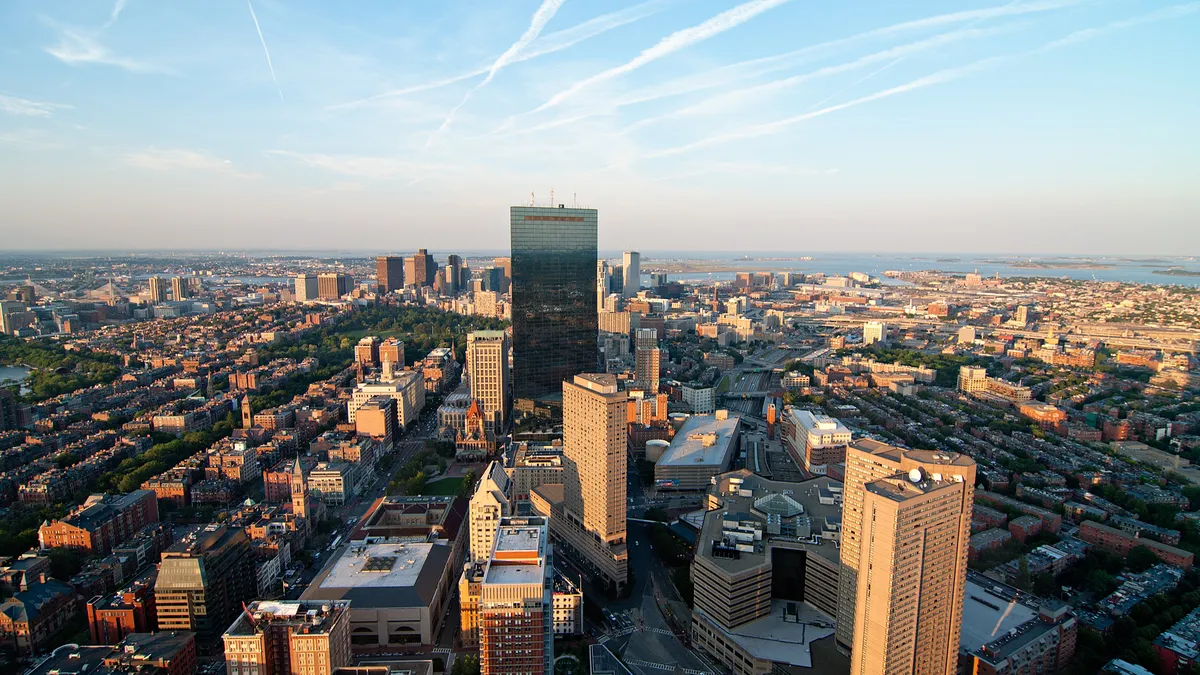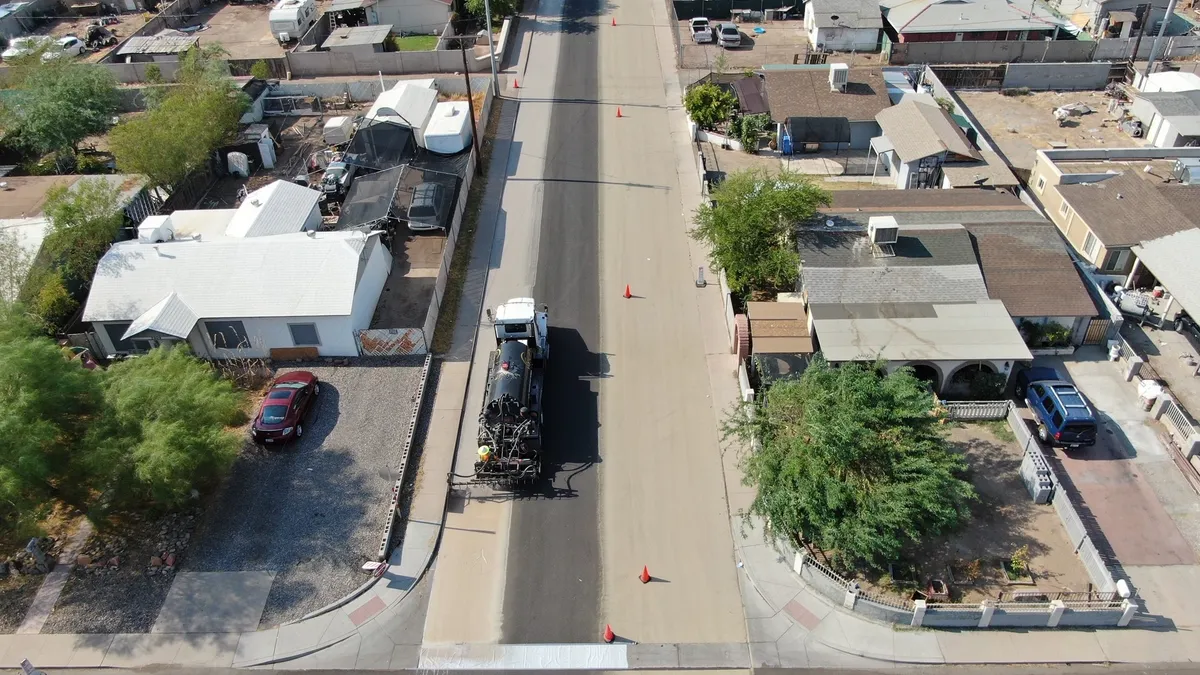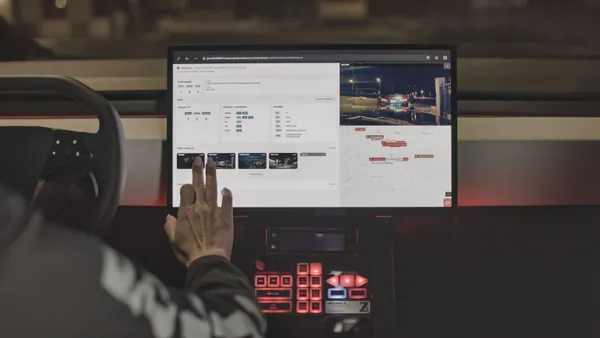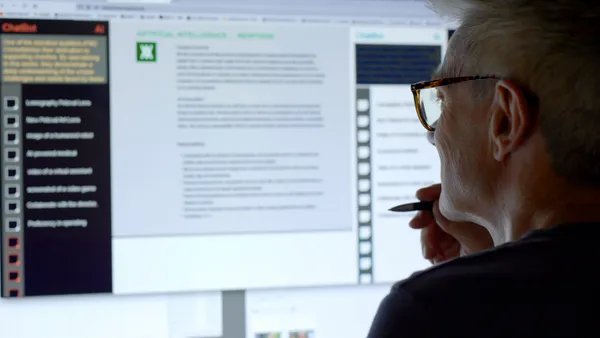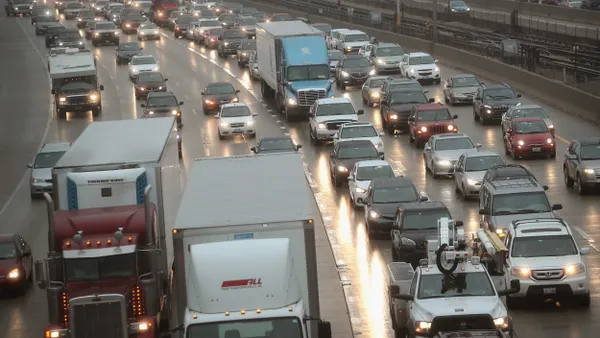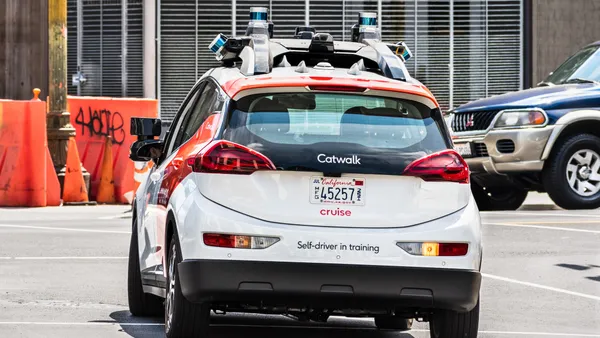Dive Brief:
- Boston officials have decided to move forward with a phased-in expansion of the police body-worn cameras program, following the release of a report detailing results from the one-year pilot program from September 2016 to August 2017.
- Mayor Marty Walsh included $2 million in this year's budget to cover the first phase of program expansion, including start-up costs and the purchase of up to 400 cameras. The city expects to spend a total of $8.5 million on operating costs during the first three years of the program, and annual recurring costs are estimated to be $3.3 million after FY 2021. The initial pilot program cost $500,000.
- Pilot data indicate the body cams contributed to "small but meaningful benefits to the civility of police-citizen encounters": There were 15 fewer citizen complaints and nine fewer use of force reports compared with the control group for the duration of the pilot.
Dive Insight:
Although the pilot indicated that body cams only had a small impact on police-citizen encounters, the city decided to go forward with the program expansion. It's worth noting that the report did not detail negative effects of police-worn cameras. The report concludes: "While the [body cam] technology did not generate broader changes to the delivery of police services in Boston, the public value generated by improvement to the civility of police-citizen encounters provides considerable support to the City of Boston's plan to implement a formal [body cam] program later in 2018."
The study was conducted in partnership with Northeastern University to determine the effect of body cams on police-citizen interactions, police proactivity, police lawfulness and police-community relations. A computer algorithm randomly chose 100 officers to wear the cameras while others were assigned to the non-wearing control group. The pilot generated approximately 38,200 videos worth more than 4,600 hours of police work.
Overall, the officers who wore body cams during the pilot didn't change their daily activities in any significant way. Although slight differences were discovered in citizen complaints and use of force reports, routine police work and officer proactivity did not change compared with the control group. The body cams also didn't have a measurable effect on racial and ethnic distributions of citizens subjected to field interrogations.
The report also explained the perceptions that different groups of people have toward police body cams, including among the officers themselves and members of the public. The vast majority of the public respondents view the program favorably and said that cameras are important for transparency, although some did raise privacy concerns about the body cam video footage, especially for innocent bystanders caught on video. Some also questioned program costs and whether the funds would be better spent on police force increases.
In addition to providing the data analysis, the report outlined suggested policy additions to guide and govern body cam use. Those include making the public aware of the body cam program implementation process and establishing a review process.
Boston's findings about body cam benefits are contrary to those in a report released last fall for Washington, DC's Metropolitan Police Department, which found no statistical evidence that body cams influence complaints against police or officers' use of force. Many were surprised by that revelation and the study subsequently has fielded some criticism for high levels of contamination in its control group data.



